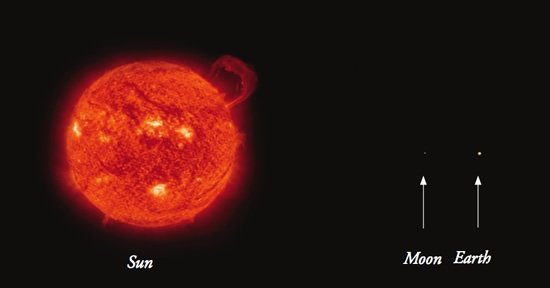Interesting aside:
As we know, the moon is slowly spiraling out and in the far future all eclipses will be at best annular, not total. IOW, from Earth’s POV, the Moon will become too small vs. the Sun to hide it completely.
Among other reasons that DPRK’s eclipse lasts a long time is that the positions of Sun and Moon are the opposite: Seen from Earth, the Moon is about as close = big as possible and the Sun is about as far = small as possible within the current era.
Now the point: In this situation, the Moon is hiding not only all of the Sun’s bright photosphere, but the innermost layers of corona as well. Which would lead to a dimmer totality, and a smaller less impressive corona. The effect in 2186 will probably be all but imperceptible to people, but would be obvious to instruments.
If long term the Moon was spiraling in, not out, then over many millions of years the Moon would keep getting closer = bigger relative to the unchanging size of the Sun. Broadly speaking, successive eclipses would have longer totality and a period of obviously lopsided corona at the beginning and end of totality. At the center of totality the corona would be thinner and therefore spikier than what we see today.
And eventually, as the Moon got close enough and therefore wide enough, a total eclipse would really be total, obscuring all of the corona. The sky would look like truly midnight, with nothing much to look at for those few minutes until first the corona and then the photosphere came out from behind the monster-sized Moon.
I SWAG that the Moon would have to be roughly double its current angular diameter to obscure substantially the whole corona to human vision. Which means it would need to spiral in from the current orbital distance of ~240K miles to ~120K miles. The good news is that’s well outside the Roche limit Roche limit - Wikipedia, so the Moon wouldn’t come unglued and destroy the Earth’s surface before humanity gets to see total total eclipses, rather than the inferior half-total eclipses we get today.
Eventually if the Moon kept spiraling in it would get to the Roche limit. Then we’d have seen our last eclipse. Followed not too long after by a rough patch for humanity: Seveneves - Wikipedia.
All in all, it’s nice that the Moon is spiraling out rather than in. 

